

In 1999 writer Chris Baty, who specializes in helping writers, challenged his friends to write 50,000 words and produce a novel during the 30 days of November. That year, 21 aspiring writers accepted the challenge. Fast forward to 2017 when 306,230 participants from around the world officially accepted the National Novel Writing Month challenge.

The rules are simple. Start writing whenever midnight arrives in your timezone on November 1. Stop on November 30. In between, write 50,000 words, the minimum word-length of a basic novel. It should be noted that these words are not edited or polished. They are grist for a First Draft. The object is to move forward without losing momentum by reading over completed words. Fun Fact: To achieve 50,000 words in 30 days, you need to write 1667 words a day. This isn’t as daunting as it looks, because you only write one word at a time. 😅
If you want to be official, you can sign up [no charge] at the NaNoWrMo website. The organzation supports your efforts by helping you set milestones, track your progress, and connect with other writers. You can do all of these things without actually signing up at NaNoWrMo. Full Disclosure: I’ve never participated, but I do set milestones, track my progress, and informally connect with other writers.
Plotters & Pantsters

You may be wondering how, exactly, one sets out to write a novel. There are many possible answers, but I’m going to focus for a minute on two types of writers.
Plotters plan everything. They’re the people with outlines. Confession: I’m a plotter. I want maps, notes, outlines . . . The whole padded box of writing.
Pantsters, as you might imagine, fly by the seat of their pants. They follow the story wherever it leads, even if it’s to a dead end. I admire their verve and fearless drive. However, at some point, even pantsters have to block out their story, usually as part of the editing process.
Pantsters don’t have to “prepare” for NaNoWrMo; plotters do. Either that or they’ll have to increase their daily word count to make 50,000 words in 30 days.
Not the Finished Product
NaNoWrMo is a great incentive for writing a first draft. Among the alumni who have gone on to create a popular finished product are:
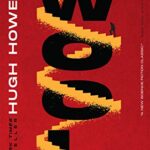
Hugh Howey: Wool 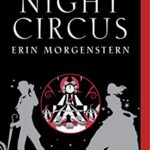
Erin Morganstern: The Night Circus 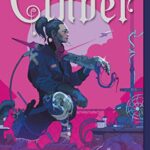
Marissa Meyer: Cinder 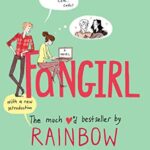
Rainbow Rowell: Fangirl 
Sara Gruen: Water for Elephants
None of these books looked like this at the end of NaNoWrMo. They looked like a double-spaced draft ready for editing. These are examples of what is possible, if this is the result you want.
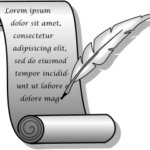
But you don’t have to publish your novel to be a success. You only have to finish it, which is exactly what NaNoWrMo helps you do. You can meet your characters and build their world while building your writing life. You can write for your own satisfaction, for your family and friends, or for a larger audience. It’s your story —only you can tell it.
📕 📗 📘
Illustrations
Medieval Writing Desk
Fountain Pen Writing Russian Cyrillic by Peter Milosevic
“Does Your Typewriter Match Your Pajamas?” 1928.
Writing Symbol by User: Chris-martin
NaNoWriMo: A Writer’s Guide. Reddsyblog. Oct. 5, 2020.
“What is NaNoWriMo?” MasterClass. Aug. 19, 2021.

Sandra Wagner-Wright holds the doctoral degree in history and taught women’s and global history at the University of Hawai`i. Sandra travels for her research, most recently to Salem, Massachusetts, the setting of her new Salem Stories series. She also enjoys traveling for new experiences. Recent trips include Antarctica and a river cruise on the Rhine from Amsterdam to Basel.
Sandra particularly likes writing about strong women who make a difference. She lives in Hilo, Hawai`i with her family and writes a blog relating to history, travel, and the idiosyncrasies of life.

